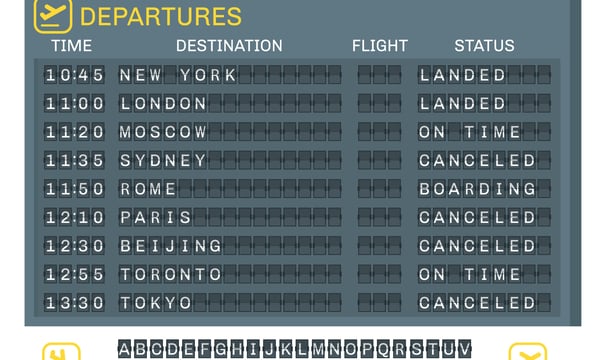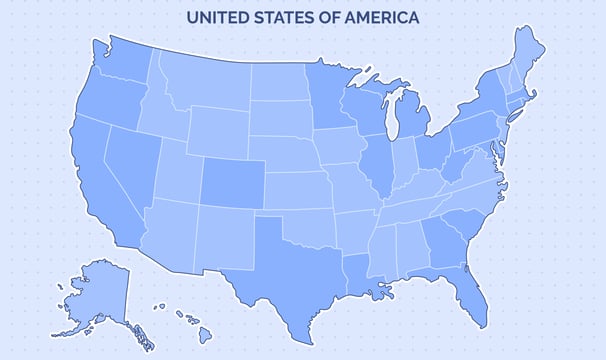
Models for Supply Chain Management
Here are some models that we have developed for companies working in Supply Chain Management.


Gas Distribution Model
Designed and implemented a gas distribution model for a gas company, which enters into contracts with a set of suppliers to buy certain gas products. These contracts stipulate the price and the maximum/minimum amount of each product that must be withdrawn from the supplier nodes over each month, each quarter and each year. Further, the movement of the products from the supplier nodes to the depots and from the depots to the customers are also governed by monthly, quarterly and yearly constraints. The optimization program provides the flow rates of the various products across different links of the supply chain such that the customer demand in each time period is satisfied and the total transportation cost is minimized.


Gas Storage Model
Developed a gas storage model for a gas company that needs to decide the amount of gas it should store in gas storage bins. Cost is incurred in both injecting and withdrawing gas from the bins. Further, each bin had a storage capacity, and injection and withdrawal limits. The model uses a set of simulated gas price scenarios over the given time horizon and for each scenario, tries to come up with feasible injection and withdrawal rates that maximize the total/discounted profit over the entire time horizon.


Gas Bidding Model
Developed a bidding model for a gas company whose shipping obligations exceed its supplies. The company receives bids from its customers, each of whom specifies the volume of gas she is willing to forego on a single day, the maximum number of days within the planning horizon that she is willing to forego gas, the amount that she would receive from the company if her bid is selected (option fee) and the minimum amount that she would accept for each unit of gas volume foregone (exercise fee).
Given a planning horizon, the desired amount of gas that must be foregone on each day and a set of bids, the gas bidding model determines the subset of bids and the days on which each of these bids are to be exercised such that the company meets the volume requirements for each day of the horizon while minimizing the sum of the option and the exercise fees for all the bids.

Models for Logistics
Here are some models that we have developed for companies working in Logistics.


Railway Track Inspection Model
Given a directed railway network with a designated subset of tracks, each of which must be traversed a fixed number of times in the planning horizon by one of the available inspection cars, the Periodic Track Inspection model generates a schedule for a set of railway inspection car such that each required track is traversed a desired number of times and the total deadheading distance is minimized.


Sales Force Allocation
Designed and implemented a sales force allocation model for an organization dealing with the marketing of educational software. Each member of the sales force team has to be assigned a set of US states for marketing tasks. The model generates a partitioning of the states into groups such that each group is comprised of states that are contiguous and all the groups have nearly equal total market size.


Airline Crew Scheduling
Developed an API for the SPRINT method that can solve a large-scale assignment problem (1 million rows and 1 billion columns) by a successive column addition method. These assignment problems can be useful for airlines who want to assign crews members to crew schedules.

Optimization in television media planning
Here are some models that we have developed for television companies.


Addressable Scheduler
Addressable spots are spots that can be individually customized for a specific smart TV. The Addressable Scheduler takes as input a set of addressable deals, a planning horizon, a set of inventory buckets and the estimated impressions for each deal and bucket combination, and produces a schedule that meets the impression guarantees for those deals. This plan serves as an input to an Ad Server that simultaneously airs different spots on different TVs depending upon the audience segment to which the TV belongs.


Media Plan Generator
Given a set of air-time breaks and a set of spots with a specific advertiser, audience segment, length and price, the spot scheduling model generates a schedule for those spots that maximizes the total revenue while ensuring that (a) no more than one spot of a particular product category (such as restaurants) can air in a break, (b) spots belonging to the same advertiser or brand are not aired close to one another, and (c) the total duration of spots assigned to a break does not exceed the length of the break.


Spot Scheduler (linear television)
Given a set of media deals, a time horizon in weeks, the inventory availability for different selling titles (or programs) in each week, the estimated weekly impressions for each audience segment and demographic, the Media Plan Generator creates a plan that meets the impression guarantees for the deals both in terms of the demographic and the narrower audience segment while ensuring that the total cost of the allocation does not exceed the deal budget and the plan is well distributed both in terms of time and the types of selling titles (or programs) included in it.
